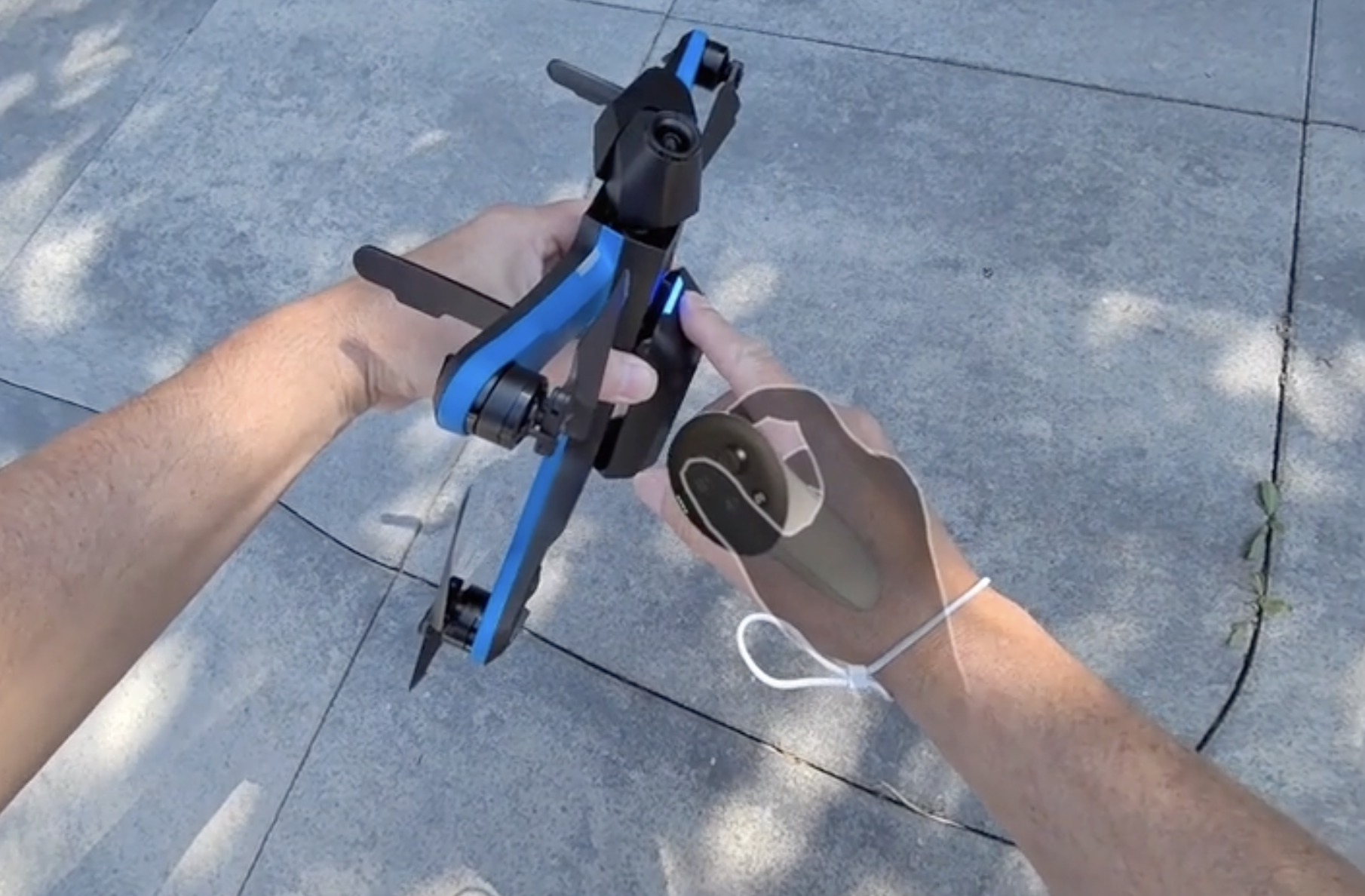Dedicated headsets for seeing live views from a drone are starting to face competition from more general purpose standalone VR headsets, for shorter range use at least.
A video posted to Reddit shows a U.S.-made quadcopter from Skydio operated from a Quest 3 with the drone’s dedicated controller wired into the headset for extended range.
0:00
A longer version of the video was also posted to Linkedin by user Oeble Huijgen with additional context on the advantages of using a Quest 3 over a phone or tablet mounted to the controller.
As described on the Linkedin post, the Quest 3 also carries some advantages over a pair of “pure” FPV goggles that are traditionally purpose-built just for controlling small aircraft on a dedicated portable screen:
Flying a drone with the controller and attached phone or tablet is a huge problem outdoors. You often don’t see what the drone captures, and the screen(s) are often too small or have reflections of the sunlight. Using the or a quest like headset eliminates almost every discomfort. The bonus you get is. Multiple screens you would need (manuals , flight zone info , what ever you need ! )… Big screens. Contact with the “real world” around you, compaired to pure FPV.
Skydio’s iPad app is installable to the Vision Pro headset for drone control from Apple’s $3,500 VR headset. Apple Vision Pro doesn’t include a dedicated USB-C port, however, so control range would be severely limited on that system.
On Quest 3, meanwhile, the Android equivalent of Skydio’s control app needs to be downloaded from a third-party site and sideloaded onto Quest 3 due to the ongoing schism between Meta and Google. Meta adopts an “open” stance for Horizon OS headsets like Quest 3 that sees Android apps installable from “unknown sources”. That means most Android apps still run on Quest headsets even though the Google Play store isn’t available. Acquiring those Android apps from third parties, however, can introduce safety concerns.
The video emerges as Apple Vision Pro and Meta Quest headsets embrace general purpose personal computing for their respective VR-based platforms. With Google and Samsung poised to follow suit with an Android XR-based system, ideas like full immersion in a single VR app give way to multitasking, passthrough, and remote control of existing devices and computers. For example, just last week we wrote about a tiny remote control car that puts you in the driver’s seat on Quest headsets.





